
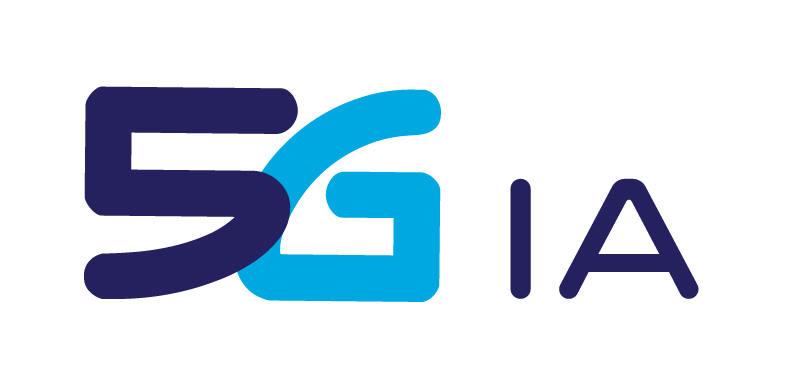
- About us
- Getting Involved
- Plans & Papers
- Events
- European 5G Activities
- Media & News
- Contact
Newsflash July 2023

Latest 5G top news
Smart5Grid published a Research Paper entitled “Optimal Relocation of Virtualized PDC in Edge-Cloud Architectures under Dynamic Latency Conditions” |
|||
|
In this work, Smart5Grid propose a cloud-edge architecture that enables continuous monitoring of synchrophasor-based applications in power grids. By employing virtual Phasor Data Concentrators (PDCs) and using a binary integer linear programming algorithm, the paper offer an optimal solution for PDC relocation to maintain network performance within latency constraints. The increasing penetration of Phasor Measurement Units (PMUs) in the power grid, combined with the advancements in the communication technologies and the cloud-edge continuum, enable the deployment of sophisticated and demanding synchrophasor-based applications. In synchrophasor networks, Phasor Data Concentrators (PDCs) are responsible for the collection, aggregation and time synchronization of PMU datasets and their transmission to the target applications according to specific latency constraints. PMU to PDC latency will be continuously impacted by the deployment of new applications, prone to violations of network related key performance indicators (KPIs). In this work, we present a cloud-edge architecture, which facilitates the continuous monitoring of the target application’s performance (Level of measurements Completeness – LoC) and provides an optimal PDC relocation solution through a binary integer linear programming algorithm. PDC relocation becomes feasible by the monitoring of the communication latency at points of interest and by the employment of virtual PDC instances at various nodes. You can download the research paper on Smart5Grid website. |
|||
Hexa-X new deliverable focus on Enabling Radio Technologies and Roadmap towards 6G released |
|||
|
This document discusses enabling technologies for 6G radio above 100 GHz, including channel modeling, radio architecture, signal processing, and localization and sensing. It summarizes testbed measurements, proof-of-concepts, and current research trends in 6G radio design and related technologies, such as optical wireless communications. The report provides a radio technologies roadmap, outlining technical challenges and key technologies beyond Hexa-X. It also shares perspectives on enabling technologies for above 100 GHz radio and the role of D-MIMO in 6G. Lastly, it highlights the expected impact of 6G on future markets. More information available on Hexa-X website. |
|||
TeraFlow Introduces TeraFlowSDN 2.1: A Major Leap in Software-Defined Networking |
|||
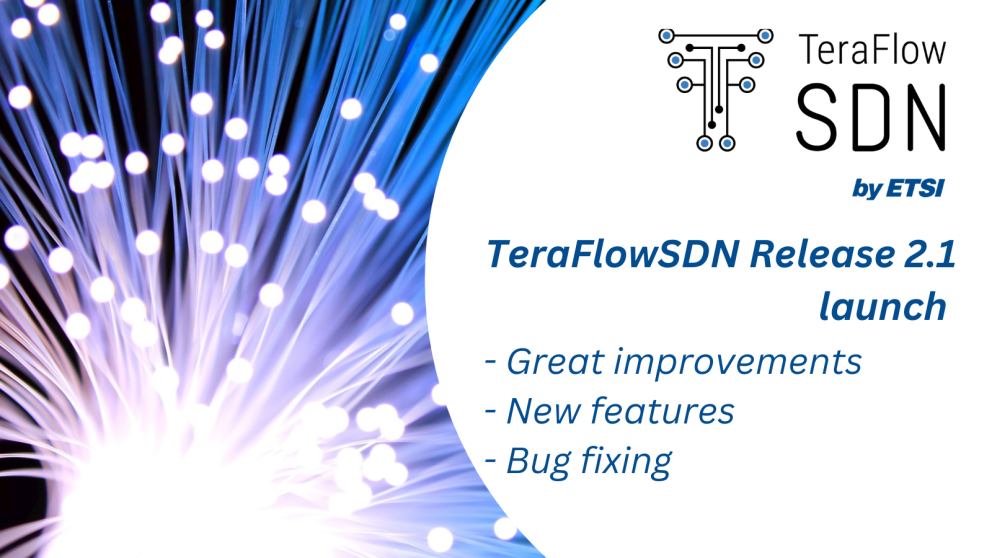 TeraFlow announced the highly anticipated release of TeraFlowSDN 2.1. This latest release brings a multitude of cutting-edge features and enhancements, further solidifying TeraFlowSDN’s position at the forefront of the networking industry. TeraFlow announced the highly anticipated release of TeraFlowSDN 2.1. This latest release brings a multitude of cutting-edge features and enhancements, further solidifying TeraFlowSDN’s position at the forefront of the networking industry.
TeraFlow project, funded by the European Commission under Horizon 2020 Programme, and the ETSI TeraFlowSDN community have launched the release 2.1 of the TeraFlowSDN controller, an innovative and robust SDN orchestrator and controller. TeraFlowSDN 2.1 focuses on delivering high performance, seamless hardware integration, advanced SDN automation, transport network slicing and multi-tenancy, cyberthreat analysis and protection, distributed ledger and smart contracts, as well as interworking capabilities across Beyond 5G networks. With these ground-breaking advancements, TeraFlowSDN continues to redefine the possibilities of SDN technology. “Our TeraFlowSDN release 2.1 provides the necessary scalability and enhancements to support SDN adoption by the SDN community. Cloud-native SDN is the next evolution for transport networks and TeraFlowSDN is paving the way”, said Ricard Vilalta, Research Director at CTTC and Chair of ETSI OSG TeraFlowSDN.
High Performance SDN Framework In this release, TeraFlowSDN enables multiple TFS instances to be deployed within the same MicroK8s environment, offering enhanced flexibility and scalability. Additionally, the introduction of the metrics collection framework leverages the linkerd service mesh in the deploy/tfs.sh script. The deployment process has been optimized to use the Grafana instance provided by the monitoring MicroK8s addon, eliminating the need for a standalone Grafana installation. These improvements enhance the performance and monitoring capabilities of the TeraFlowSDN framework. Hardware and L0/L3 Multi-Layer Integration TeraFlowSDN 2.1 introduces seamless integration with hardware and L0/L3 layers. Users can now create XR services directly from the test tool, allowing for demonstrations without a complex multi-layer setup. The OpenConfig Driver has undergone revision, incorporating updated L2NM/L3NM Configuration Rules. Additionally, the Load Generator now includes improved L2/L3 services. These enhancements simplify network management and provide a seamless user experience. SDN Automation TeraFlowSDN 2.1 offers powerful automation capabilities. The monitoring system has been refined to ensure accurate parsing and checking of KPI value ranges. Metrics collection has been enabled in the Policy component, along with the deployment of necessary resources and an autoscaler. The WebUI has been updated to include a dedicated Policy tab, streamlining policy management, and making it more accessible to users. Transport Network Slicing and Multi-Tenancy With TeraFlowSDN 2.1, transport network slicing and multi-tenancy become even more flexible and customizable. Slice Grouping functionality is now available, with the option to activate or deactivate it using environment variables. The implementation of the IETF Slice NBI empowers users with greater control over network slicing, facilitating efficient multi-tenancy management. Cyberthreat Analysis and Protection TeraFlowSDN 2.1 includes extensive enhancements to its cybersecurity capabilities. The L3 components have been updated for improved scalability and migrated to the TeraFlowSDN 2 architecture. An updated AI/ML model has been integrated to detect cybersecurity attacks effectively. Furthermore, the framework now supports horizontal scalability, centralizing attack detection and mitigation. The addition of a Cybersecurity Grafana dashboard provides comprehensive visualization and monitoring of cybersecurity metrics. Distributed Ledger and Smart Contracts With the introduction of TeraFlowSDN 2.1, users gain access to a powerful Distributed Ledger Technology (DLT) performance assessment tool. This tool allows users to evaluate the performance and efficiency of DLT within the TeraFlowSDN framework, paving the way for secure and scalable smart contract deployments. Interworking Across Beyond 5G Networks TeraFlowSDN 2.1 introduces several significant improvements, including partial fixes for the OECC/PSC’22 test, enhancements to the InterDomain component, and various other improvements, ensuring seamless interworking across Beyond 5G networks. TeraFlowSDN 2.1 represents a major leap forward in software-defined networking, empowering network operators with unparalleled capabilities and performance. With its focus on high performance, seamless integration, automation, slicing, cybersecurity, distributed ledger, and interworking, TeraFlowSDN is pushing the boundaries of what is possible in the networking industry. |
|||
5G-IANA interim review |
|||
|
|||
Whitepaper “Beyond 5G/6G EMF Considerations” by the 5G PPP TMV WG – EMF TF |
|||
 The 5G PPP Test, Measurement and KPIs Validation Working Group – EMF Task Force published the Whitepaper “Beyond 5G/6G EMF Considerations”. The 5G PPP Test, Measurement and KPIs Validation Working Group – EMF Task Force published the Whitepaper “Beyond 5G/6G EMF Considerations”.
This document provides an overview of electromagnetic field (EMF) exposure topics related to wireless communications and in particular to beyond 5G and 6G systems. The relevant standards and effects are summarised; additionally, ideas on what and how to measure EMF effects are put forward as basis for further discussion and research. The available key performance indicators (KPIs) from the fifth generation Infrastructure Public Private Partnership (5G PPP) phase III projects with a focus on EMF are also consolidated with a view of how the KPIs are considered in the 5G system and how they may evolve in 6G systems. The Whitepaper is available on the 5G PPP website here and on Zenodo here. |
|||
VITAL-5G participation in the OSM#15 Ecosystem Day |
|||
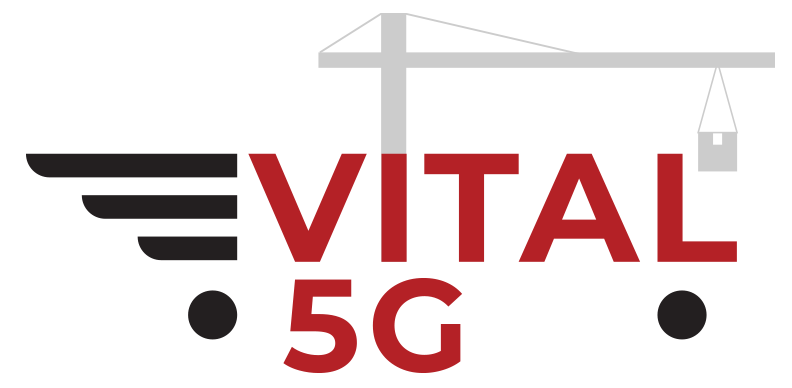 In an important milestone concerning VITAL5G’s standardization efforts, the project successfully participated in the OSM#15 Ecosystem Day in Barcelona, Spain, between the 14th and 15th of June 2023. In an important milestone concerning VITAL5G’s standardization efforts, the project successfully participated in the OSM#15 Ecosystem Day in Barcelona, Spain, between the 14th and 15th of June 2023.
The project had been represented by Juan-Manuel Sen from DHL Spain. As part of the presentation, the VITAL-5G platform was demonstrated alongside our call for 3rd party experimenters and the value added to the OSM community. |
|||
5G-LOGINNOV showcased at IPIC and at the local stakeholder event |
|||
 The 9th edition of the International Physical Internet Conference (IPIC) took place in Athens from 13-15 June. During this event, the achievements of the 5G-LOGINNOV project were discussed and showcased through various activities, including a Local Stakeholder Event in the Port of Piraeus. Over 100 speakers, 200 attendees, and 15 exhibitors have participated and the presence of the 5G LOGINNOV Project highlighted its significant role in the event, emphasising the transformative potential of 5G technology in the logistics industry. The 9th edition of the International Physical Internet Conference (IPIC) took place in Athens from 13-15 June. During this event, the achievements of the 5G-LOGINNOV project were discussed and showcased through various activities, including a Local Stakeholder Event in the Port of Piraeus. Over 100 speakers, 200 attendees, and 15 exhibitors have participated and the presence of the 5G LOGINNOV Project highlighted its significant role in the event, emphasising the transformative potential of 5G technology in the logistics industry.
One of the highlights was the session titled “5G: revolutionising the logistics sector in Europe,” co-organised by the project on 14 June. With the participation of Pavlos Basaras from ICCS and Port of Piraeus’ pilot site leader, the panel explored the multifaceted impact of 5G in the Transport & Logistics (T&L) sector, addressing governance issues, potential solutions, and business aspects. Two representatives from Greek-based start-ups within the 5G-LOGINNOV consortium, Christos Skliros (Technical Director of Hellenic Drones S.A) and Yannis Kopsinis (Co-Founder and CEO of LIBRA AI Technologies), participated in the panel. You can download the presentation here. On 15 June, Piergiuseppe Di Gregorio from ICOOR & Università degli Studi di Modena e Reggio Emilia also presented the 5G-LOGINNOV project case study at session 6.C on “5G in Ports and Vessel Automation”. In addition to the session, the event also highlighted the Greek pilot site and its activities through a Local Stakeholder workshop. Selected participants had the opportunity to take part in a bus tour visiting various port locations, including areas with 5G coverage as part of the 5G-LOGINNOV project. They also had the chance to see the 4K cameras, IoT devices, trucks, and cranes relevant to the project. Overall, the tour provided an insightful look into the areas where the 5G-LOGINNOV trials were conducted. |
|||
5GMED – Cross-border smart grids for the mobility of the future |
|||
The 5GMED project is carrying out four pilot projects, one in the railway field and three more in the Mediterranean corridor motorway, with the aim of providing a model for the sustainable deployment of smart networks for the connected and automated mobility of the future in Europe. This section of the border between France and Spain is strategic, since it supports 55% of the road traffic between the Iberian Peninsula and the rest of Europe, as well as 65% of the rail traffic between both sides of the Pyrenees. 5GMED deploys an infrastructure that provides advanced connectivity services in a scalable and reproducible manner across transportation routes, and tests a wide range of technologies applied to mobility, including on-board and infrastructure sensors, 5G networks, and Artificial Intelligence (AI). Specifically, the use cases developed at 5GMED focus on remote driving of autonomous vehicles, advanced traffic management, high-speed connectivity services on rail during the cross-border shift, and high-quality infotainment services (such as augmented reality and 360º videos) for the connected vehicle. To analyze the importance of 5GMED for the mobility of the future, Diálogos at La Vanguardia, a Spanish newspaper, with the collaboration of Cellnex, the coordinator of 5GMED, organized a session with some of the 5GMED partners:
José López Luque highlighted the relevance of “giving continuity to services between countries and supporting the deployment of 5G” in areas that currently have even less connectivity. Additionally, he pointed out that “the role of companies like Cellnex Telecom, acting as a ‘neutral host’, will help boost the deployment of 5G coverage in areas where traditional operators currently do not reach”. Judit Bastida added that 5GMED will demonstrate how “the mobility of the future can be implemented with different types of cutting-edge technologies that are based on 5G networks, such as ‘edge computing’, which makes it easier to connect many devices”. The expert also stressed that “the deployment of 5G is tested in a controlled environment to subsequently implement it”. However, one of the technological challenges is found precisely in the section of the border. Specifically, the great challenge lies in “reducing service interruption times when crossing the border”, which can be decisive both in the case of the connected and autonomous vehicle and the railway, as explained by the Technical Director of 5GMED, Francisco Vázquez Gallego.
“Innovation is a strategic and transversal pillar of Autopistas Abertis through which we project new solutions for the mobility of the future”, assured the Innovation Manager of Autopistas, Xavier Dura. “The future of infrastructures depends on its digitization, and 5GMED provides all the ingredients to deploy different services for a more cooperative, connected and automated mobility. The three use cases on highways will serve to investigate the application of technologies in infrastructures that will benefit road safety and sustainability”, he explained.
On the railway, “the passenger will benefit from unlimited access to the Internet for professional use and entertainment, and the rail transport operator will obtain lower costs for better and new services for its operation”, stressed the Head of Innovation Systems at Comsa, Manuel Alfageme. “The economic viability and attractiveness of the railways will improve with the new connectivity to the train developed,” he added. The CIO of Mobile World Capital, Eduard Martín, celebrated the potential of 5GMED to “generate added value for society thanks to the commitment to technology transfer”, which will allow “creating new opportunities that feedback into the exploitation phase of the project”. Collaboration between the ecosystem and the different actors is “key”to “add knowledge, promote technology transfer, innovate and develop better-advanced technologies, create better solutions, attract talent and have a positive impact on society, particularly in mobility and connectivity”, agreed Rita Almela, founder of 101 Ventures.
This article was originally published in the Spanish newspaper La Vanguardia.
|
|||
6GStart webinar: “A 6G Vision: 3GPP Release 19 & Vertical Industries Requirements” – Slides and recording available |
|||
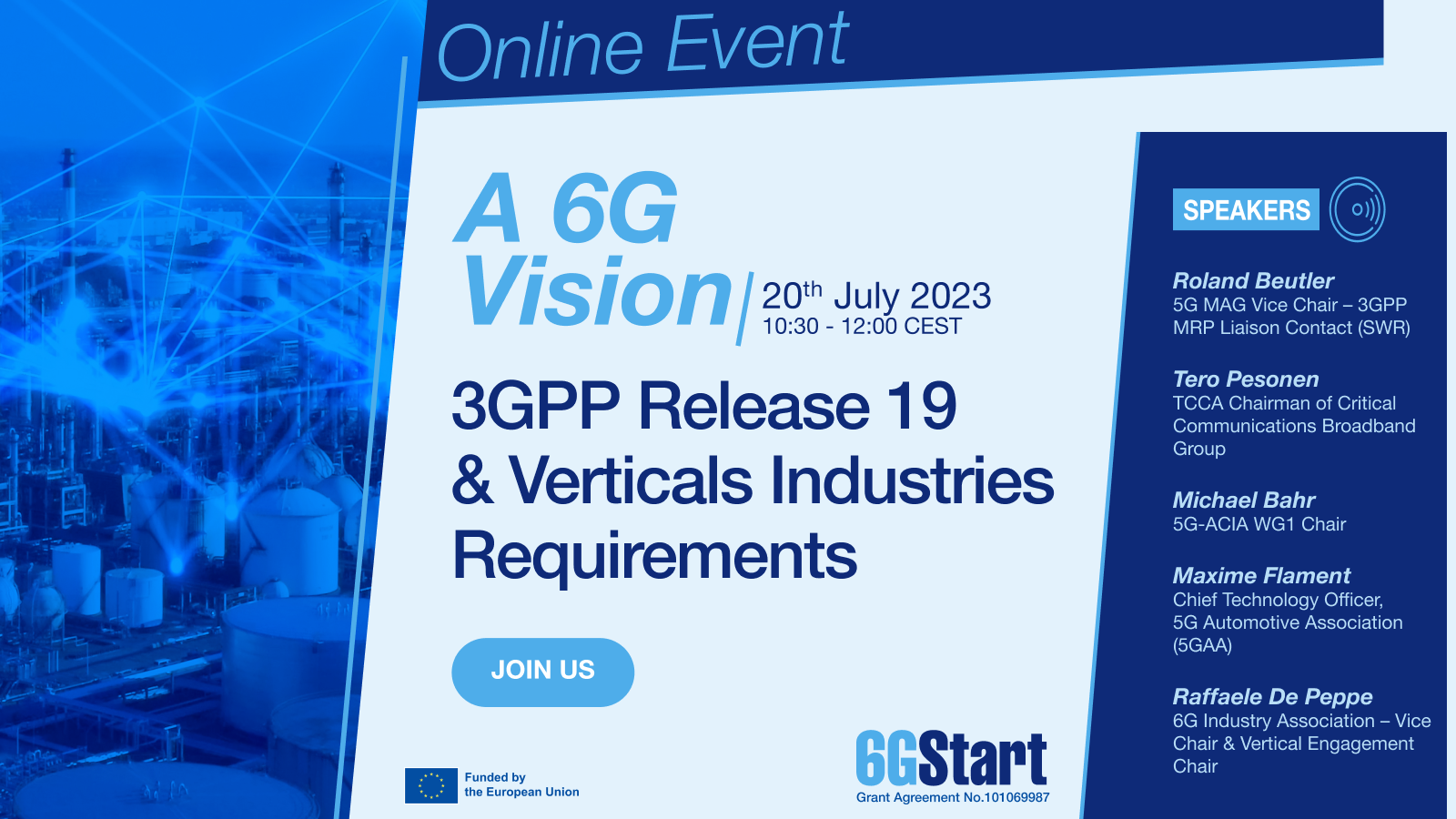 The webinar organised by the 6GStart project took place on July 20th, 2023. It brought together representatives from various vertical industries and other experts to shape the future of 3GPP release 19 and set the stage for the emergence of the 6G system. The 5G system has revolutionised communication systems, achieving a significant increase in key performance indicators compared to its predecessor, the 4G system. Moreover, it has introduced new functionalities to support emerging application scenarios. Building upon the success of 5G, 6G is expected to emerge in the late 2020s, and there are ongoing activities to define its requirements. The webinar organised by the 6GStart project took place on July 20th, 2023. It brought together representatives from various vertical industries and other experts to shape the future of 3GPP release 19 and set the stage for the emergence of the 6G system. The 5G system has revolutionised communication systems, achieving a significant increase in key performance indicators compared to its predecessor, the 4G system. Moreover, it has introduced new functionalities to support emerging application scenarios. Building upon the success of 5G, 6G is expected to emerge in the late 2020s, and there are ongoing activities to define its requirements.
By bringing together representatives from various vertical industries, the webinar delved into defining thoughts, ideas, and requirements for 3GPP release 19 from the verticals’ perspective. This collaborative effort will ensure that the 5G system continues to meet the evolving needs of different industries while paving the way for the future advancements of 6G. During the webinar, the ongoing studies for 3GPP release 19 and the additional capabilities of the 5G system were explored. These provided insights into the future of 5G and offer guidance on the capabilities that the 6G system needs to encompass. You can watch the webinar here and the slides there. |
|||
SCoDIHNet monthly news |
|||
|
|||

-
-
-
-
-
- IWAPS workshop in the Context of ARES 2023
——————————————————-
IEEE IDAACS 2023 Workshop “Beyond 5G and 6G Networks Technologies and Security”
——————————————————-
Digital Innovation Hubs Event
——————————————————-
9th IEEE World Forum on Internet of Things
——————————————————-
5G TECHRITORY Forum
——————————————————- - TeraFlowSDN ecosystem day
——————————————————-
IEEE Workshop on Computer Aided Modeling and Design of Communication Links and Networks
——————————————————-
GLOBECOM 2023
——————————————————-
WONS 2024 – Call for Papers
——————————————————-
- IWAPS workshop in the Context of ARES 2023
-
-
-
-
IWAPS workshop in the Context of ARES 2023Benevento, Italy – 29 August – 1st September, 2023 |
||
|
The “3rd International Workshop on Advances on Privacy Preserving Technologies and Solutions” IWAPS 2023, will happen in the context of ARES 2023. The 2023 IWAPS will bring together researchers, engineers, and practitioners to present and discuss latest advances and innovations in theories, infrastructure, schemes, and applications for secure computation, privacy technologies, security economics, human computer interaction, as well as to identify emerging research topics and define the future trends. The ARES conference will take place in Benevento, Italy during August 29 – September 01, 2023 period. The workshop is co-organized from the following European Commission (Horizon 2020 Programme) projects: SECONDO |
||
|
|
||
|
You are invited to 12th IEEE International Conference on Intelligent Data Acquisition and Advanced Computing Systems: Technology and Applications 2023 and the workshop “Beyond 5G and 6G Networks Technologies and Security”. This Workshop will cover the innovative technologies that have been studied in various research projects as well as standardized by 3GPP in Rel 16 and Rel 17. The Workshop will encourage the submission of papers studying the status of beyond 5G and 6G networks research and commercial deployment of 5G networks in order to assess how this relates to the current 6G vision. Please click here for more information and for the invitation.
Deadline for paper submission: May 2, 2023
Main topics at this event will be:
|
||
|
||
|
The first “Digital Innovation Hubs (DIH) to strengthen knowledge exchange with the SNS community and collaboration” event will take place online on Thursday, 5 of October 2023, 14:00-16:00. The DIH has the objective to facilitate the digitalisation of the European industry in the context of the Digital Europe Programme. SCoDIHNet is the network of DIHs with expertise in the domain of Smart Connectivity (5G/6G, IoT, Security). DIHs aim to develop the links between end users (industry) and technology providers, of which SNS JU projects are considered key sources. To this end, various initiatives are being developed focusing on replicability, mapping of technology providers and end user requirements. The replicability initiative aims to facilitate the reuse of use cases/solutions developed and experimented by SNS projects by compiling them in a catalogue that is regularly updated and from which DIHs could pick up use cases and solutions which fits their customers. The mapping initiative aims to map all technology providers, testbeds and DIHs at regional level to foster the cooperation among stakeholders working in the same region, thus facilitating development of innovation with end user customers. Lastly, end user requirements are being collected to feed the SNS SRIA and workplan, as DIHs are very close to end users. Please register here. This event is organised by SNS OPS, with the collaboration of SCoDIHNet. |
||
|
|
||
|
The 9th IEEE World Forum on Internet of Things (IEEE WFIoT2023) is the premier event of the IEEE IoT Technical Community, a multiple Society initiative aggregating the wide expertise inherent to the IoT domain. This year, the theme for WFIoT 2023 is “The Blue Planet: A Marriage of Sea and Space”. The forum consists of a comprehensive and interesting program that brings the latest developments from industry and business world, the most influential individuals from across the breath of the IoT ecosystem, news of significant innovations and advances from the research and academic community, as well as practitioners and end-users sharing their experiences on the successes and challenges of IoT deployments. The World Forum’s ninth edition will feature presentations and panels addressing how the sea and space are great domains for IoT. It will also explore how IoT technologies, applications, and solutions rely on a wide ecosystem spanning space, aerial, ground, and maritime networks and harnessing the latest emerging technological trends which can be leveraged for the benefit of society and humanity. Overall the World Forum will consist of: • Plenary Program 12-27 October 2023 // Aveiro, Portugal |
||
|
|
||
|
Mark your calendars – Europe’s leading 5G forum, 5G Techritory, returns on October 18-19! Two action-packed days of knowledge-sharing, cross-sectoral collaboration, and, of course, networking. Make sure you don’t miss one of the biggest industry gatherings of the year.
The 5G Techritory platform is an initiative to bring together the key players in 5G development with the goal of developing a robust and aligned 5G Ecosystem in Europe and beyond. The event will take place in physical (combined physical and digital) form – with speakers and VIP guests in attendance in Riga, Latvia, and streamed online to thousands of viewers worldwide.
The Metaverse – technical readiness and use cases Where to register and have more info? Mark your calendar and save your seat for the 6th edition of 5G Techritory via their official site: https://www.5gtechritory.com/ Save your seat: https://www.mittoevents.com/5g-techritory-2023/onsite-participants Register online here. |
||
|
|
||
|
The First TeraFlowSDN Ecosystem Day will be held on Wednesday, October 18th, 2023, during the TeraFlowSDN plenary in Castelldefels, Spain. The TFS Ecosystem Day allows organizations in the TFS Ecosystem to share about their TeraFlowSDN experience and plans and discuss how TFS can help them to achieve their goals. Presentations and demos cover a wide range of aspects from research activities in academia to deployment and commercial initiatives, focusing on cutting-edge Telco use cases. Should you or your organization be interested in presenting your TeraFlowSDN achievements at the upcoming Ecosystem Day, please send an email to TFSsupport@etsi.org no later than September 15th, 2023 with the following information: Subject: TFS#3 Ecosystem Day – Talk Proposal
More information is available here. |
||
|
|
||
|
aerOS project co-organises the “DEPLOYING APPLICATIONS IN THE 6G ERA: THE DAWN OF HIGHLY-SECURE, TRUSTWORTHY, SCALABLE AND ADAPTABLE ECOSYSTEMS” workshop in the context of IEEE International Workshop on Computer Aided Modeling and Design of Communication Links and Networks. With 5G becoming mainstream after being deployed in several regions of the world, the constant growth of interconnected devices and the demand for high data rate services compel the conceptualization of the next generation of networking which will address the needs of an “always connected” society. The astonishing numbers of interconnected devices supporting smart homes/cities/transportations, e-health applications and consumer services, push toward redesigning the Internet-of-Everything (IoE) paradigm with a user-centric approach, thus extending the 5G-era shift from rate-centric enhanced mobile broadband services to ultra-reliable low-latency communications. 6G Networks should be capable of unleashing the full potential of each application, through the inherent support of contemporary wireless technologies, cutting-edge network architectures, AI/ML-based optimization techniques and over-the-top security features. It is often stated that 6G will facilitate the pivotal shift from present-day’s interconnected intelligent nodes to the much broader “connected intelligence”, a holistic approach for delivering disruptive services, thus introducing new heights of user satisfaction. In this respect, this Special Session aims at providing a forum where researchers, engineers, and practitioners may discuss the latest advances on architectures, algorithms, abstractions, and technologies for delivering scalable, secure, trustworthy, robust, flexible, and agile applications. We strongly encourage submission of innovative work on contemporary network and application design. Find out more on the workshop here. |
||
|
||
|
The 2023 IEEE GLOBECOM will be held at Kuala Lumpur, Malaysia, 4-8 December 2023. Themed “Intelligent Communications for Shared Prosperity,” the conference will offer five full days of original paper presentations, tutorials, workshops, industry program with keynotes and panels from prominent research, industry and government leaders, business and industry panels, and technological exhibits. In addition to exciting technical symposia, tutorials, industry panels and exhibitions, we solicit proposals for half-day or full-day workshops, to be held on 4 or 8 December 2023. The aim of the conference workshops is to emphasize emerging topics that are not specifically covered in the main symposia. Each workshop may include a mix of regular papers, invited presentations, keynotes and panels that encourage the participation of attendees in active discussion. Please address your questions to Workshop Program Co-Chairs Yacine Ghamri-Doudane, Guanyi Liu, Christos Verikoukis.
== Workshop Program Co-Chairs ==
|
||
|
|
||
|
Wireless on-demand network systems and services have become mainstream technologies that shape the networked world of the future. Different types of wireless LANs, both sub-6 GHz and in higher frequency bands, as well as such established technologies as Bluetooth LE, LTE-Direct, LTE ProSE, NR sidelink, NFC, and optical links are the cornerstone of networking paradigms including NextG cellular, mesh and sensor networks, cloud networks, vehicular networks, non-terrestrial networks, and in-body networks. The challenges of this exciting research field are numerous. These include providing robust services in highly dynamic, mobile, and extreme environments, how to minimize energy demands or zero out battery usage in favor of renewable energy sources, how to smartly blend multiple wireless technologies available to a network node (including across radically different bands), and how to make wireless on-demand networks and services self-configurable, adaptive, self-organizing, and self-healing in a variety of different context, each exhibiting its own peculiar constraints. IFIP WONS, now at its eighteenth edition, has established itself as a high quality forum to address the above and related challenges. WONS 2024 aims at continuing to provide a global platform for rich interactions between experts in their fields, discussing innovative contributions in a stimulating environment. This announcement solicits original contributions of high-quality research providing novel insights on all aspects of wireless on-demand networks and systems. Topics of interest comprise, but are not limited to:
The authors of selected papers from WONS 2024 edition will be invited to submit an extended version of their work to Elsevier Computer Communications for possible publication in a dedicated Virtual Special Issue (VSI). VSI submitted papers should extend significantly the original work offering additional contribution and insight to the community. Important dates
Acceptance notification: Dec 8, 2023 Click here for more information. |
||
The editor of the 5G PPP newsflash on behalf of the 6GStart Project is Carole Manero, IDATE, 601 rue Georges Méliès, 34000 Montpellier, France.
This document reflects only the views of its authors.



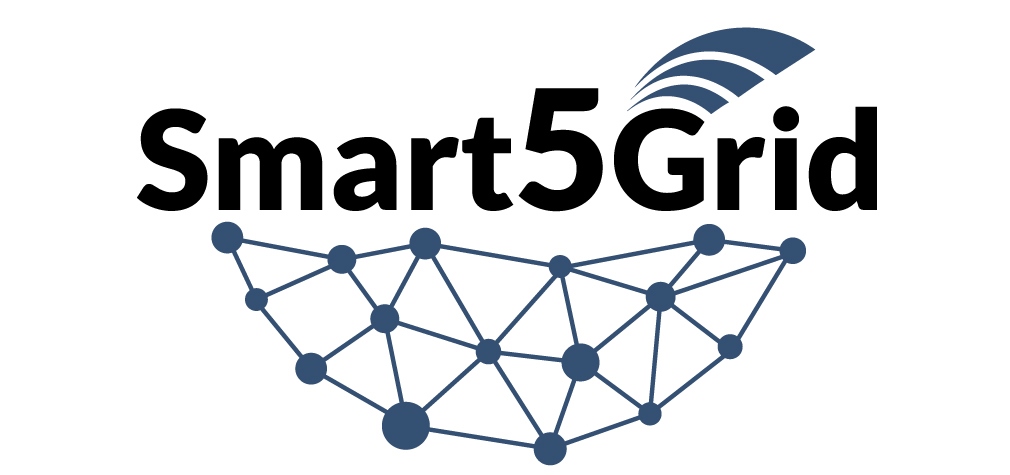 The Smart5Grid paper entitled “Optimal Relocation of Virtualized PDC in Edge-Cloud Architectures under Dynamic Latency Conditions” is now available.
The Smart5Grid paper entitled “Optimal Relocation of Virtualized PDC in Edge-Cloud Architectures under Dynamic Latency Conditions” is now available.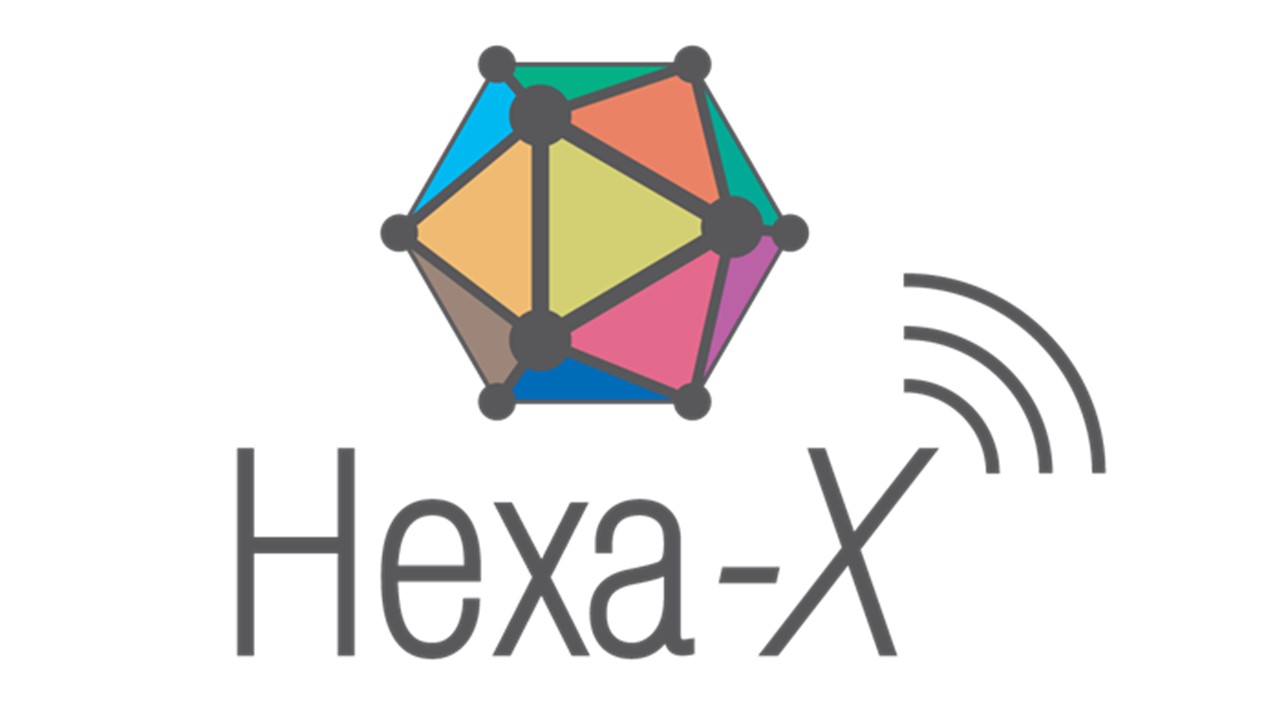 Hexa-X announced the release of its latest research deliverable, D2.4, from Hexa-X Project’s Work Package 2 (WP2) focused on “
Hexa-X announced the release of its latest research deliverable, D2.4, from Hexa-X Project’s Work Package 2 (WP2) focused on “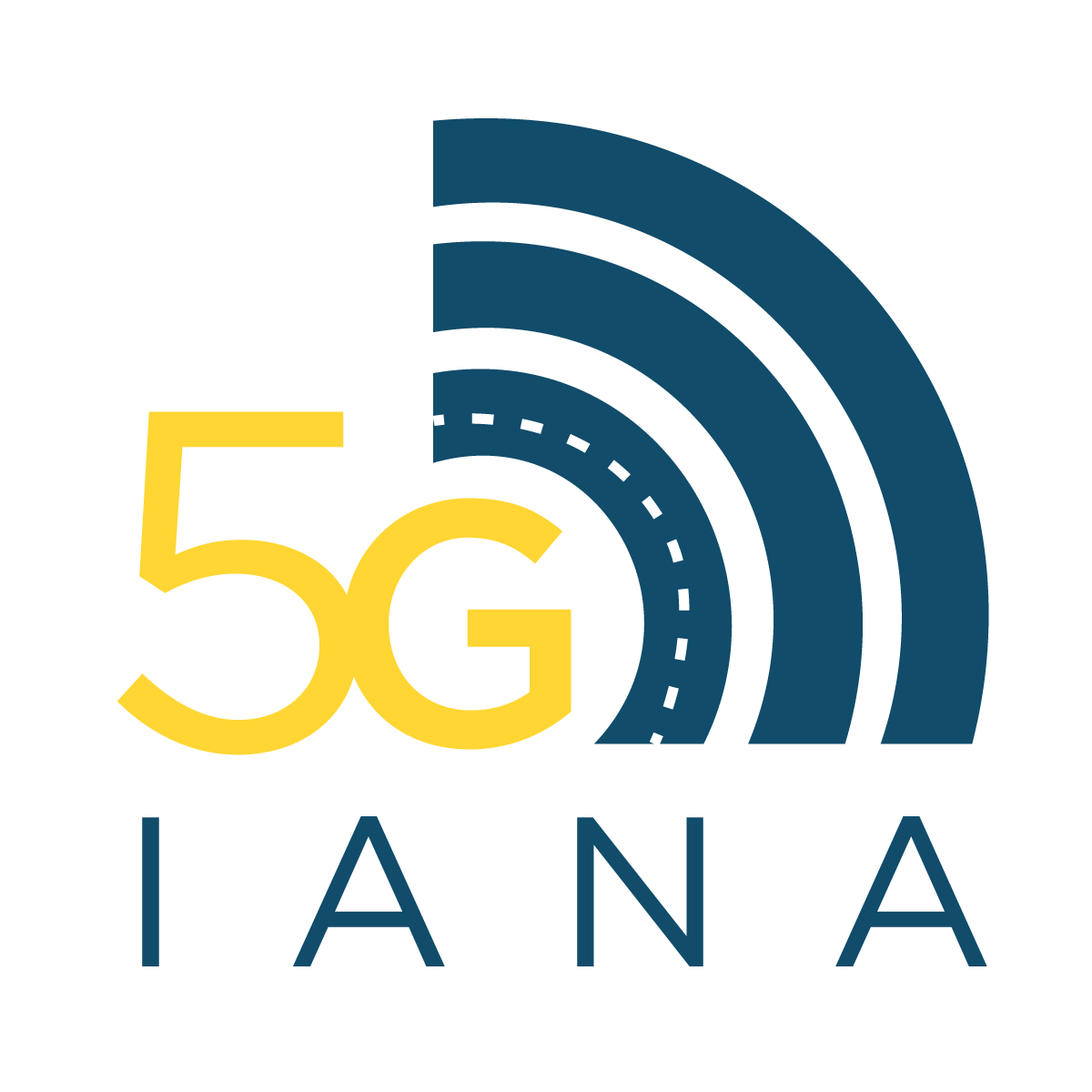 5G-IANA interim review
5G-IANA interim review
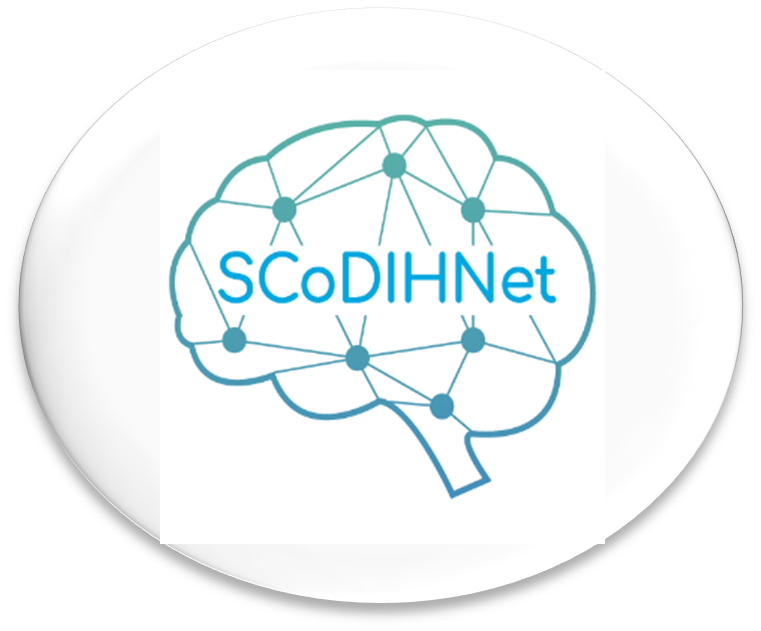 The Smart Connectivity DIH Network has mainly worked on the following topics:
The Smart Connectivity DIH Network has mainly worked on the following topics:

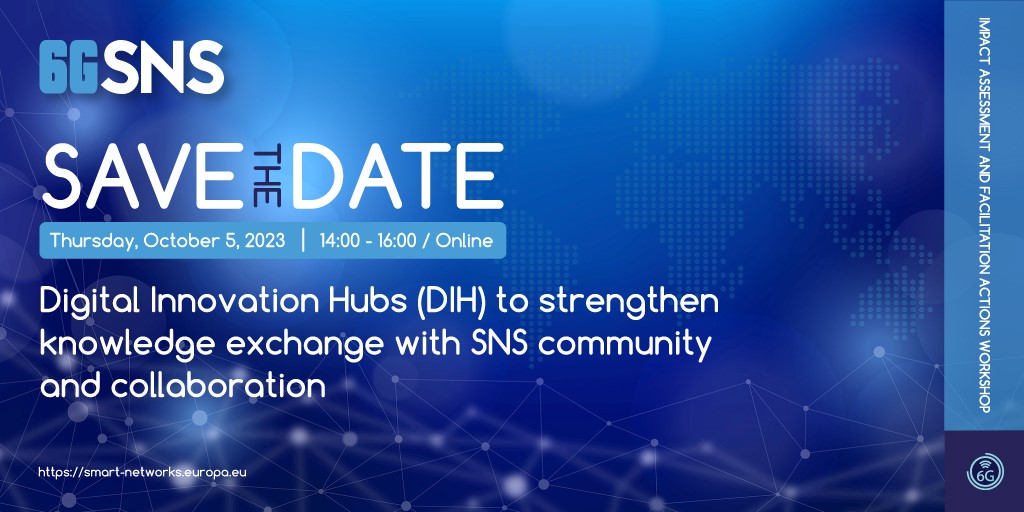

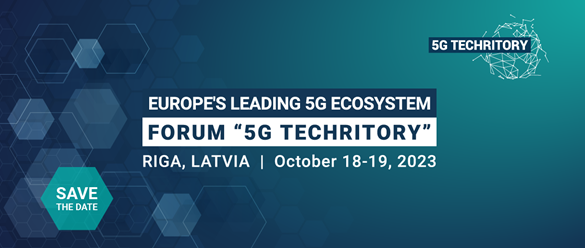
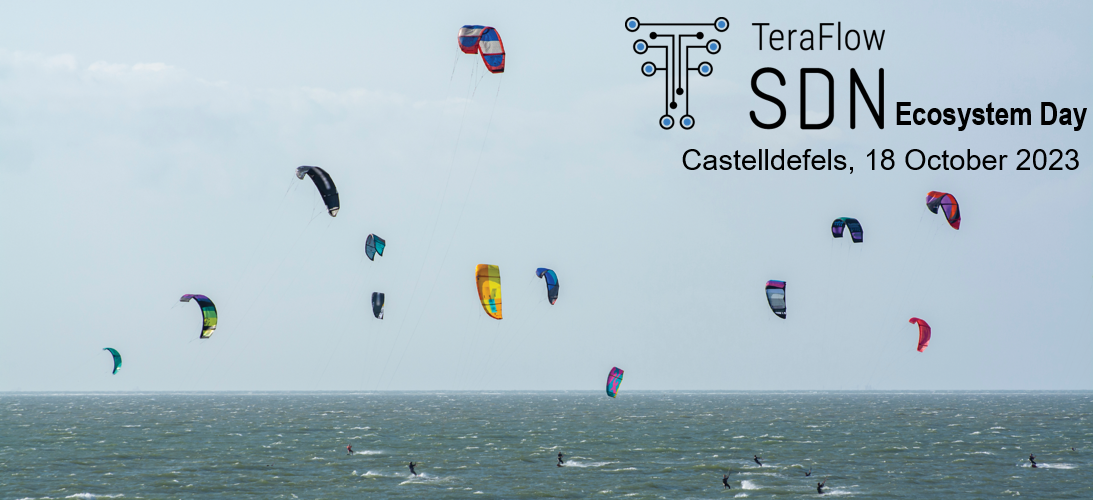

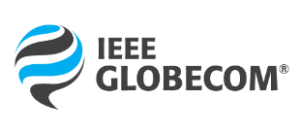 IEEE GLOBECOM 2023
IEEE GLOBECOM 2023


